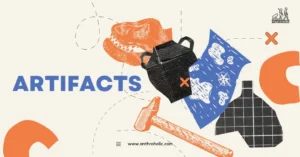AI Answer Evaluation Platform Live Now. Try Free Answer Evaluation Now
Dollo’s Rule
Dollo’s Rule, named after the Belgian paleontologist Louis Dollo, is a principle in the field of evolutionary biology that states that an organism is unable to return to a previous evolutionary stage once it has evolved away from it [1].

The Concept of Dollo’s Rule
The rule was first proposed by Louis Dollo in 1893, based on his observations of fossil records, particularly those of extinct dinosaur species [2]. Dollo’s Rule can be summarized as follows:
- An organism cannot regain a lost characteristic that has disappeared through evolution.
- Evolutionary changes are irreversible, and once a trait is lost, it cannot be regained through subsequent evolution [3].
Mechanisms of Dollo’s Rule
The mechanisms that underpin Dollo’s Rule can be broadly categorized into two main factors:
Genetic Factors
- Loss of genetic information: When a trait is lost due to evolution, the genes responsible for the trait may be lost or altered beyond recovery. This makes it nearly impossible for the trait to reappear in future generations [4].
- Genetic constraints: The complexity of genetic networks and the interactions among various genes make it difficult for an organism to revert to a previous state [5].
Developmental Factors
- Developmental constraints: Changes in the developmental pathways and processes of an organism can make it difficult to revert to a previous state [6].
- Functional constraints: The loss of a trait may lead to the development of new traits or functions that are incompatible with the original trait, making it challenging for the trait to be regained [7].
Applications and Limitations
Applications
Dollo’s Rule has various applications in the field of evolutionary biology, including:
- Phylogenetics: Dollo’s Rule can be used to infer the evolutionary relationships between different species based on their shared and lost traits [8].
- Paleontology: The rule helps paleontologists understand the evolutionary history of extinct species by analyzing their fossil records [9].
Limitations
Despite its applications, Dollo’s Rule has some limitations:
- Not universally applicable: The rule does not apply to all traits or organisms. Some traits, such as the ability to produce certain enzymes, can be regained through evolution under certain circumstances [10].
- Incomplete understanding of genetic mechanisms: Our understanding of the genetic and developmental mechanisms underlying Dollo’s Rule is still evolving, which limits the rule’s predictive power [11].
Criticisms and Counter Arguments
Several criticisms have been raised against Dollo’s Rule, with counterarguments to these criticisms also being presented. Some of the key criticisms and counter arguments are:
Criticism
- Exceptions to the rule: There are instances where organisms have seemingly regained lost traits, challenging the validity of Dollo’s Rule [12].
Counterargument
- Apparent exceptions to Dollo’s Rule may be the result of convergent evolution, where similar traits evolve independently in separate lineages, rather than the re-evolution of lost traits [13].
Conclusion
Dollo’s Rule is an influential concept in evolutionary biology that provides valuable insights into the evolutionary history of organisms and their traits. Despite some limitations and criticisms, the rule remains a significant tool for understanding the irreversible nature of evolution and the genetic and developmental mechanisms that underpin this phenomenon. As our knowledge of genetics and developmental biology advances, so too will our understanding of Dollo’s Rule and its implications for the study of evolution.
References
[1] Gould, S. J. (1970). Dollo on Dollo’s Law: Irreversibility and the Status of Evolutionary Laws. Journal of the History of Biology, 3(2), 189-212.
[2] Dollo, L. (1893). Les Lois de l’Evolution. Bulletin de la Société Belge de Géologie, de Paléontologie et d’Hydrologie, 7, 164-166.
[3] Collin, R., & Cipriani, R. (2003). Dollo’s Law and the Re-Evolution of Shell Coiling. Proceedings of the Royal Society B: Biological Sciences, 270(1533), 2551-2555.
[4] Marshall, C. R., Raff, E. C., & Raff, R. A. (1994). Dollo’s Law and the Death and Resurrection of Genes. Proceedings of the National Academy of Sciences, 91(25), 12283-12287.
[5] Wake, D. B., Wake, M. H., & Specht, C. D. (2011). Homoplasy: From Detecting Pattern to Determining Process and Mechanism of Evolution. Science, 331(6020), 1032-1035.
[6] Alberch, P. (1982). Developmental Constraints in Evolutionary Processes. In J. T. Bonner (Ed.), Evolution and Development (pp. 313-332). Springer.
[7] Laubichler, M. D., & Wagner, G. P. (2001). How Molecular is Molecular Developmental Biology? A Reply to Alex Rosenberg’s Reductionism Redux: Computing the Embryo. Biology and Philosophy, 16(1), 53-68.
[8] Ronquist, F. (2004). Bayesian Inference of Character Evolution. Trends in Ecology & Evolution, 19(9), 475-481.
[9] Sereno, P. C. (1999). The Evolution of Dinosaurs. Science, 284(5423), 2137-2147.
[10] Whiting, M. F., Bradler, S., & Maxwell, T. (2003). Loss and Recovery of Wings in Stick Insects. Nature, 421(6920), 264-267.
[11] Wagner, G. P. (2011). The Origins of Evolutionary Innovations: A Theory of Transformative Change in Living Systems. Oxford University Press.
[12] Hall, B. K. (2003). Unlocking the Black Box between Genotype and Phenotype: Cell Condensations as Morphogenetic (Modular) Units. Biology and Philosophy, 18(2), 219-247.
[13] Losos, J. B. (2011). Convergence, Adaptation, and Constraint. Evolution, 65(7), 1827-1840.



